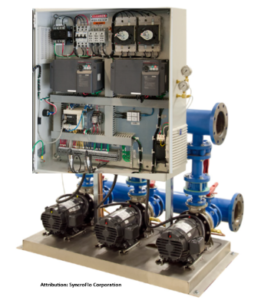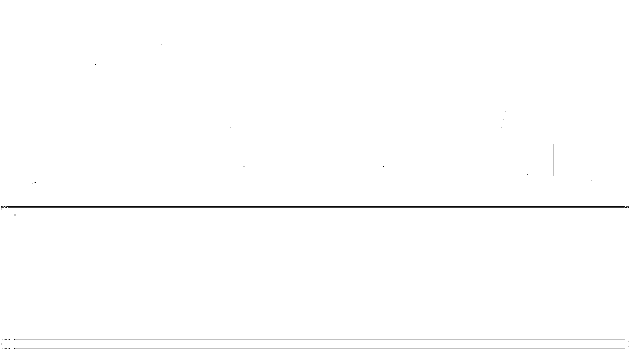Why use a Constant Speed Booster?
Pumps used in booster systems may operate at constant speed to provide flow and pressure. The system outlet pressure is controlled by pressure regulating valves mounted on the pumps discharge which regulate pressure based on their preset limits.
This arrangement is viable if the system is pumping to an elevated storage tank or water tower and the suction supply pressure is relatively constant. The conditions allow the pumps to run to the left of the best efficiency to allow for run out based on a conservative system friction head curve. Under these conditions the pumps have very little extra pressure at shutoff.

Why Use a Variable Speed Booster?
Pumps used in booster systems may use a variable frequency drive as shown in Figure (2). Variable frequency drives offer a variety of advantages including:
-
The pressure boost required for variable speed systems is lower than constant speed, due to the absence of pressure control valve pressure losses.
- Variable frequency drives (VFD’s) allow no inrush current when starting motors.
-
Decreasing the speed of a pump shifts its efficiency curve to the left. This means that the pump runs with the best possible efficiency at all flow rates.
-
A VFD drive makes a pump produce the exact amount of pressure that is required at a particular flow rate.
-
VFD’s effectively make a pump perform like it is a variable horsepower device. This allows for more flexible energy savings potential than can be achieved by running constant speed pumps.
-
Variable speed pumping systems can reduce system pressure at lower flow rates where low friction losses exist, for additional energy savings.

